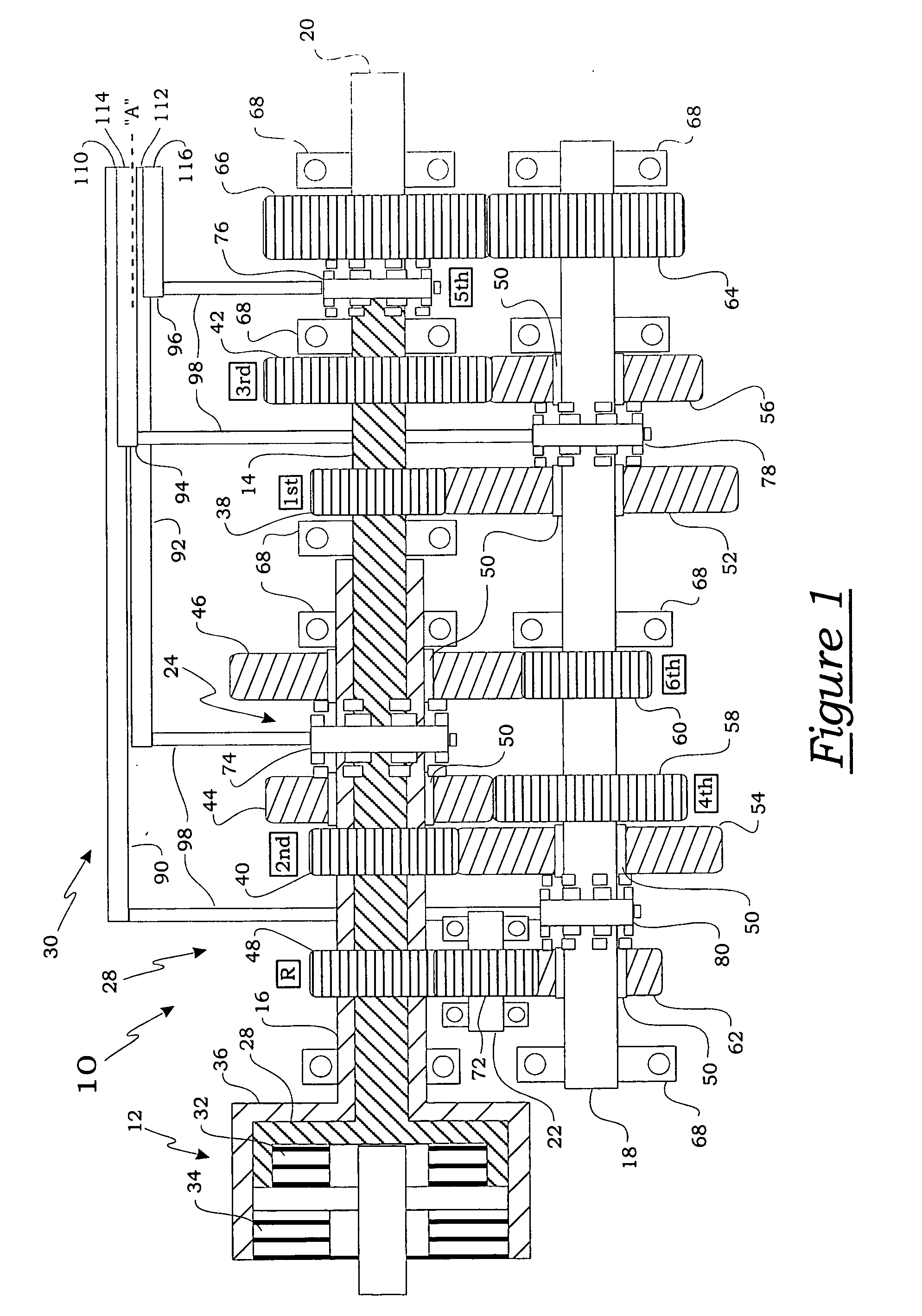Transmission having an electro-mechanical gear actuation system
a gear actuation and transmission technology, applied in the direction of mechanical equipment, transportation and packaging, gears, etc., can solve the problems of loss of efficiency, large physical interaction required by the operator, and interruption of drive connections, so as to avoid simplify the wiring harness for the transmission of the present invention, and avoid the effect of additional manufacturing and assembly costs
- Summary
- Abstract
- Description
- Claims
- Application Information
AI Technical Summary
Benefits of technology
Problems solved by technology
Method used
Image
Examples
Embodiment Construction
)
[0028] The present invention relates, generally, to a transmission for a motor vehicle that includes a gear actuation system, and more specifically to a transmission having a gear actuation system that electro-mechanically performs both gear selection and gear engagement. Generally speaking, a transmission forms a portion of a vehicle powertrain and is responsible for taking a torque input from a prime mover, such as an internal combustion engine, and transmitting the torque through selectable gear ratios to the vehicle drive wheels. With regard to the recent evolution in vehicle transmissions that has produced a number of automated “manual” types of transmissions, the present invention overcomes the remaining shortcomings and drawbacks related to employing separate hydraulic components to perform gear selection and gear engagement in these transmissions.
[0029] For example, one embodiment of a transmission having an electromechanical gear actuation system of the present invention ...
PUM
 Login to View More
Login to View More Abstract
Description
Claims
Application Information
 Login to View More
Login to View More - R&D
- Intellectual Property
- Life Sciences
- Materials
- Tech Scout
- Unparalleled Data Quality
- Higher Quality Content
- 60% Fewer Hallucinations
Browse by: Latest US Patents, China's latest patents, Technical Efficacy Thesaurus, Application Domain, Technology Topic, Popular Technical Reports.
© 2025 PatSnap. All rights reserved.Legal|Privacy policy|Modern Slavery Act Transparency Statement|Sitemap|About US| Contact US: help@patsnap.com



